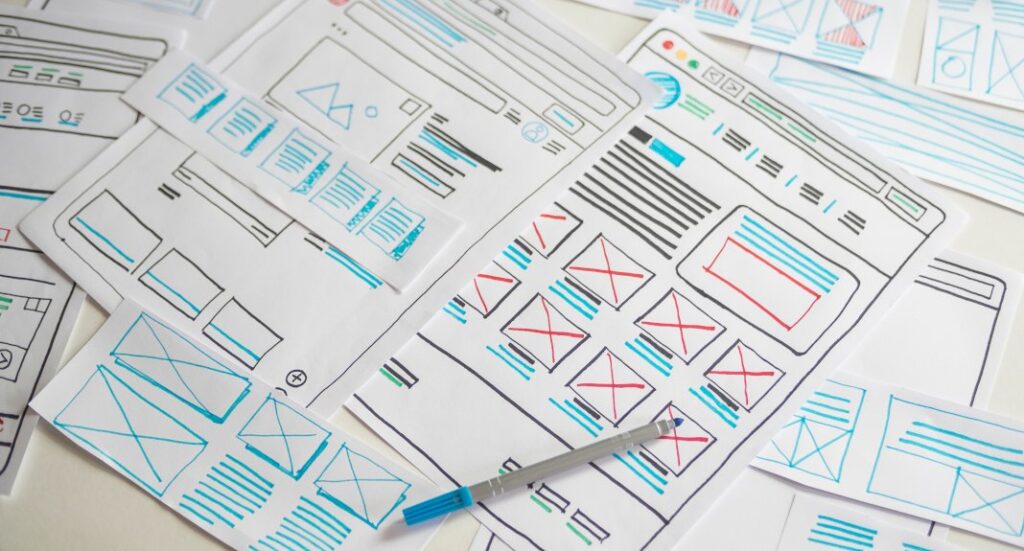
A website is crucial for businesses and individuals to establish their online presence. A well-designed website can help attract new customers, showcase your brand, and drive growth. However, building a website may seem daunting, with so many options and variables to consider. This guide will explore five tips to help you build an effective website.

1. Define Your Purpose and Goals
Before you start building your website, defining its purpose and goals is crucial. Ask yourself what you want to achieve with your website. Is it to showcase your products or services, drive sales, or provide information? Once you’ve established your purpose, set clear and measurable goals to help you track progress and inform improvements.
These goals should be specific and realistic while also being the motivating force for your website development. Once you have identified them, use analytics tools to measure the success of your website in reaching those goals. Consider tracking metrics such as page views, conversion rate, time on site, and bounce rate to help understand engagement with your content or products. Additionally, ask yourself what other types of information can support your objectives, such as customer service contact points or blog postings.
2. Plan Your Site Structure and Navigation

The structure and navigation of your website play a crucial role in the user experience. Plan your site structure and navigation carefully, ensuring it’s intuitive and easy to use. Consider breaking down your content into categories and subcategories. Create a clear hierarchy that makes it easy for users to find what they want.
Think about the user journey when creating your site structure. What are the steps that a user needs to take to find what they’re looking for? How can you make this process easier for them? Additionally, consider including search functionality on your website. This allows users to quickly and easily find content anywhere within your site.
3. Focus on User Experience and Design
User experience (UX) and design are critical to establishing a successful website. Ensure your website is visually appealing, easy to navigate, and loads quickly.
Here are some tips on how to design a UX (user experience):
Prioritize Aesthetics
Keep your website looking fresh and welcoming by using the latest design trends. Choose a font and colors representing your brand, and create a cohesive look throughout your site.
Optimize Navigation
Make it easy for visitors to find what they want with clearly labeled pages and drop-down navigation menus. Ensure that the text is legible, and format sections accordingly to make it easier for users to scan the page quickly.
Utilize Visuals
Incorporate visuals such as videos, GIFs, and high-resolution images into your website design to create an immersive experience. Use visuals sparingly, though – too much can overwhelm visitors and discourage them from returning.
Enhance Responsiveness
Use responsive design principles to ensure your website is optimized for desktop and mobile devices. Create pages with fluid layouts, allowing the webpage to adapt to different screen sizes. This helps reduce bounce rates and improves user engagement with your site.
4. Incorporate SEO Best Practices

Search engine optimization (SEO) helps you rank higher in search results and attract more targeted traffic to your website. Incorporating SEO best practices can help ensure that your website stands out from the competition. A reliable SEO agency can offer valuable guidance on which techniques are most effective for your business, helping you optimize your content for better visibility online. They can also monitor your website’s performance and suggest changes based on current trends.
5. Test and Iterate
Testing and iterating are crucial steps in building an effective website. Test your site regularly to ensure it’s functioning correctly and meeting user needs. Monitor your analytics to track progress towards your goals. Use these insights to inform improvements and make iterative changes to your site over time.
Once you are satisfied with the current version of your website, start A/B testing different elements to find out what works best for your users. Test colors, shapes, calls-to-action (CTAs), and other design elements to optimize the user experience. This can help you collect valuable insights into how people interact with your site and can be used to inform design decisions.
In Summary
Building a website can seem daunting, but with these five tips, you can create an effective website that drives growth and success. Define your purpose and goals, plan your site structure and navigation, focus on UX and design, incorporate SEO best practices, and test and iterate regularly. With these best practices in mind, you’ll be well on your way to creating a successful website that meets your business or personal needs.


